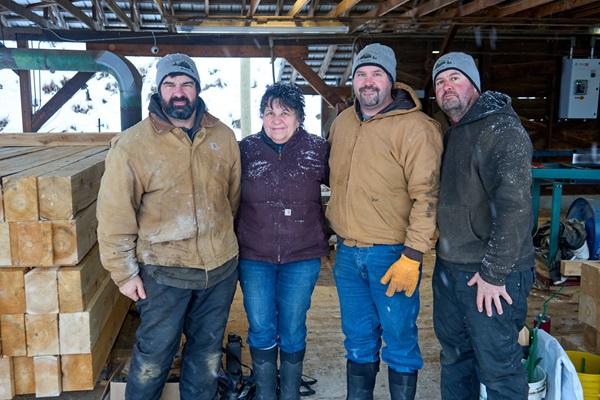
*Image: Working Lands grant recipients Goodridge Lumber.
By Clare Salerno, Vt Agency of Agriculture, Food & Markets
Since 2012, the Working Lands Enterprise Initiative has supported Vermont agriculture and forestry businesses with vital investments that have helped grow their businesses and economic impact. With $18.8 million invested in 555 farm, food and forestry projects, and an additional $30.9 million leveraged in matching funds, the Working Lands program has played an important role in the growth of Vermont’s rural economy.
To celebrate these investments and the resulting impacts, the WLEI Board has released the latest Impact Report detailing the significant outcomes from the entire 12 years of the program. The report contains specific details of the funding in fiscal year 2024, including special funds allocated to the program from the American Rescue Plan Act and a one-time pool of funds specifically for small farm diversification and transition projects.
With growth supported by WLEF grants, farm and forest businesses from all corners of VT have generated tens of millions in new economic activity, helped strengthen local supply chains, and invested in the future of Vermont’s working lands. These are businesses like Goodridge Lumber in Albany, which received a $225,789 grant in 2024 to invest in a three-phase power electric system. The project will increase sawmill profitability and achieve an estimated savings of 12,807 gallons of diesel fuel and 180,347 pounds of carbon emissions per year.
“In Fiscal Year 2024, logging and sawmill businesses benefited from over $600,000 in WLEI grants, providing crucial support to help them adapt to the challenges of climate change,” says Danielle Fitzko, Commissioner of the Vermont Department of Forests, Parks and Recreation. “Beyond this, the program has also made significant investments in forestry-focused service providers, which are vital to maintaining the health and sustainability of Vermont’s working lands economy”.”
2024 saw continued investment in service provider organizations and producer associations that provide key supports to working lands businesses in Vermont. The impact report tells the story of the Vermont Community Loan Fund’s SPROUT Program, which provides loans whose interested rates are subsidized by WLEI dollars. By subsidizing interest rates on loans to working lands businesses, WLEI and VCLF are helping early-stage and start-up enterprises that traditional lenders often overlook.
“Investing in our rural communities is critical to Vermont’s future,” says Anson Tebbetts, Vermont’s Secretary of Agriculture. “The Working Lands Enterprise Initiative grows our economy while making it more affordable for those who are making a living off the land. These annual investments are important because they support Vermont’s forest and food economy. For more than a decade, we have seen businesses grow, create jobs, and produce quality products because of the Working Lands Enterprise Initiative.”
In 2012, the Vermont Legislature passed Act 142, creating the Vermont Working Lands Enterprise Initiative, and the structure for investment of state dollars into agricultural and forestry-based businesses. The Working Lands Enterprise Board (WLEB) is made up of 20 members throughout the supply chains of agriculture and forestry, and staff from the Vermont Agency of Agriculture, Food & Markets, Vermont Department of Forests, Parks & Recreation, Vermont Agency of Commerce & Community Development, Vermont Housing & Conservation Board, Vermont Economic Development Authority, and the Vermont Sustainable Jobs Fund.
To learn about the Working Lands Enterprise Initiative, visit www.workinglands.vermont.gov and follow on Facebook and Instagram @vtworkinglands.

